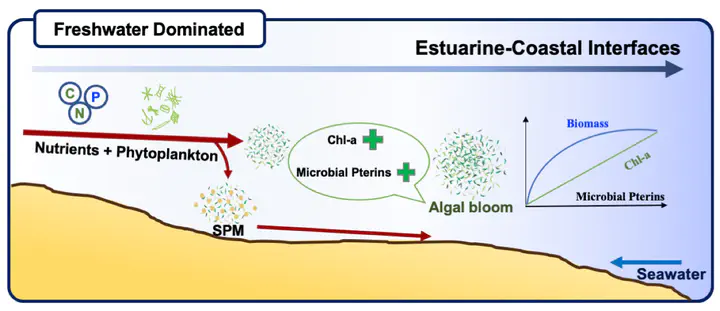11. Microbial pterin biomolecules facilitate algal blooms in response to nutrient pressure in estuarine and coastal continuum
 Graph Abstract
Graph Abstract
Abstract
Pterins are ubiquitous biomolecules synthesized by diverse phytoplankton, serve as pigments, cofactors, precursors, and redox sensors, playing crucial roles in ocean carbon fixation and nutrient cycling. However, the mechanisms driving their production, distribution, and fate in marine ecosystems are not well understood. This study examines the generation and behavior of microbial pterins in the Jiulong River Estuary, a system affected by nutrient-rich discharges. Results reveal distinct patterns: pterin concentrations remain uniform across water columns during flood periods but vary significantly during dry periods. During flooding, microbial pterins rank as isoxanthopterin > neopterin > dihydroneopterin > biopterin, while biopterin and isoxanthopterin dominate during dry conditions. Elevated pterin levels in the upper estuary during flooding suggest rapid production in response to nutrient influx, which drives algal proliferation. Positive correlations between pterins and chlorophyll-a (chl-a) highlight photoautotrophic microbes as primary contributors. Notably, cellular biopterin peaks during exponential algal growth, indicating its preparatory role in bloom proliferation. As dual biomarkers with chl-a, microbial pterins enhance the specificity of bloom detection and offer insights into bloom dynamics and nutrient-driven changes. These findings underscore the ecological significance of pterins in nutrient cycling and their potential as bioindicators, warranting further research into their broader environmental implications.